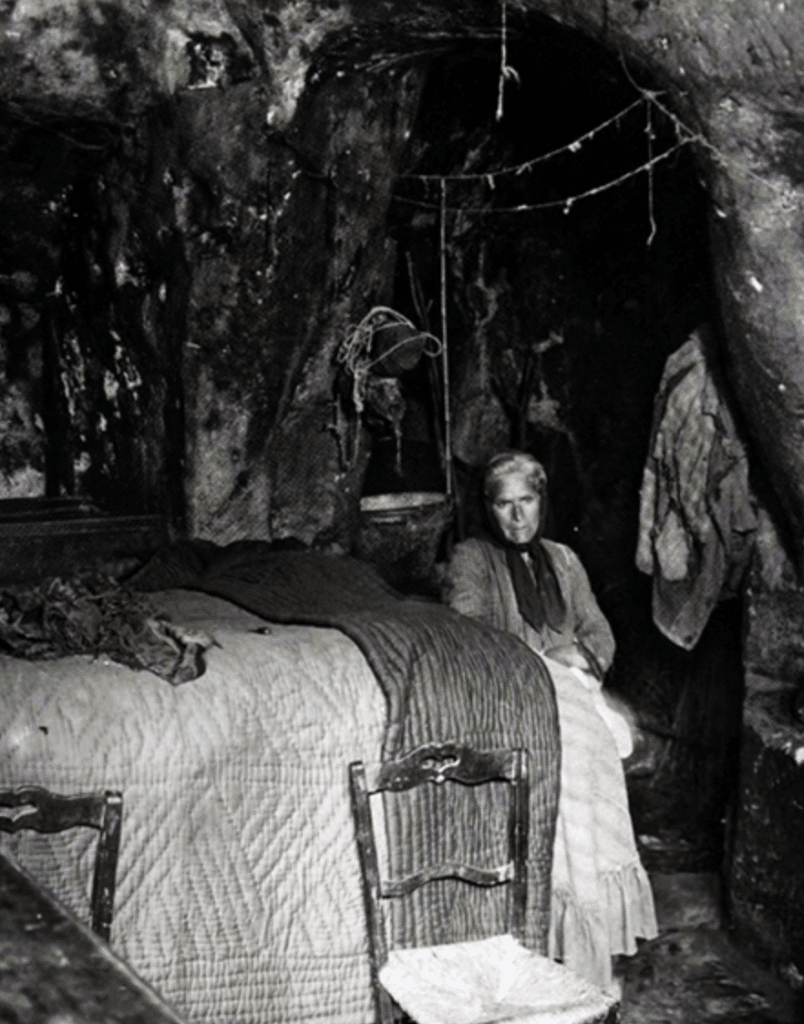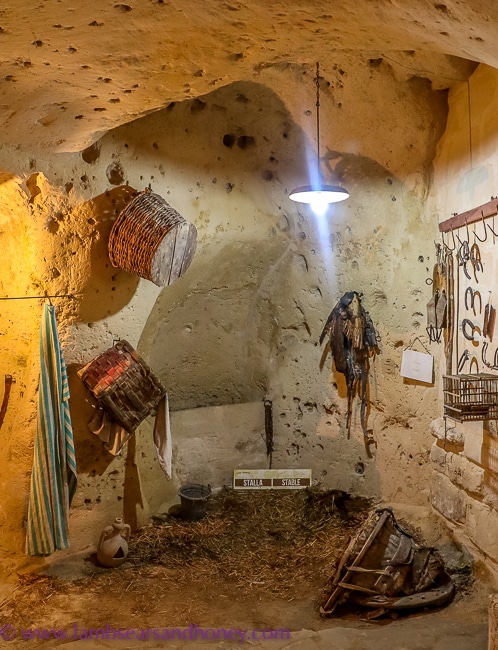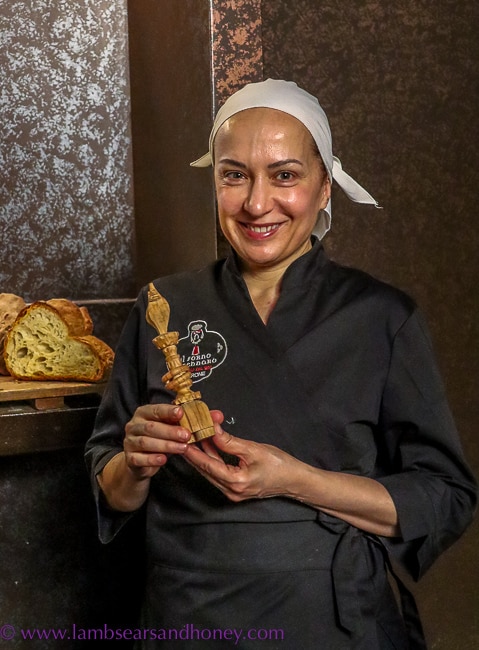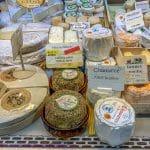A 2019 UNESCO European Capital of Culture, the ancient stone streets of Matera are utterly unique – and are symbolised by a unique loaf of bread.
Carved into the limestone of a steep gorge over the River Gravina in Basilicata, Southern Italy, Matera is considered to be the oldest inhabited city in the world, with estimates suggesting it has been inhabited continuously for over three millennia, and periodically for up to 700 millennia before that.
The multi-layered dwellings consist of sculpted cave homes where the inhabitants lived alongside their domestic livestock. The history of these steep and rocky streets is found in the layers of the town. An archaeological dig in the very early 1900’s uncovered first Christian coffins and Saracen remains from 800AD, under that were found relics of Byzantine occupation dated to around 400AD, then a layer of ancient Roman and Greek coins and under that 3,000 year old ceramic shards.
For thousands of years, Materan peasants walked narrow paths to surrounding fields to work the land of local landowners. They spoke their own dialect, developed their own distinctive horn-shaped bread and enjoyed a fertile, if intensely impoverished, culture.
However, by the middle of the last century the city and it’s citizens had become an embarrassment to Italy. The modern Italy of the 1950’s was aghast at a region that still dwelt in caves with no power or plumbing, housed their animals next to their children, lived among open drains of human waste, and suffered from endemic malaria and an intolerably high infant mortality rate. (I was told that in the mid-50’s the infant mortality rate was around 40%.)
Through the 1950′ and 60’s, in a project with disappointing results, the government embarked on a forced resettlement program, moving the residents of the historical Sassi of Matera into modern housing – ultimately at the cost of this unique culture. Once emptied, the Sassi was briefly abandoned, but since the 1980’s new residents have been moving back, renovating and modernising this distinctive streetscape.
In 2014 Matera was declared a UNESCO European Capital of Culture for 2019 and today this extraordinary city holds a fascination for a growing number of national and international visitors. Restoration teams battle time and moisture seepage from the limestone to conserve countless ancient frescoes in dozens of churches and caves, and a large percentage of the once dank and musty caves have been turned into modern homes, restaurants and hotels. Lines of fluttering washing are again now to be seen among the rabbit warren of Matera lanes.
The Bloke and I usually prefer to find our own way around a new (to us) region, but there’s a wisdom in knowing one’s limitations – and this town is definitely one that visitors will get so much more from with the services of a local guide. Our guide Stefania, from Southern Visions Travel, led us up and down the chunky cobbled lanes, telling us stories that only well-briefed locals can know, and leading us into nooks and crannies we would otherwise have missed.
Eventually her tour led us up out of the old lanes of the Sassi and into the modern premises of Il Forno di Gennaro – a bakery where the 21st century locals maintain at least one ancient Matera tradition.
The distinctive Matera double-folded, horn-shaped bread with three slashes has long been the city’s symbol. The cave dwellings had no ovens, so loaves were made and shaped at home, stamped with the initials of their creators, then carried to a communal oven for baking, usually once a week. Made from the local, famous, durum wheat, the substantial loaves developed their unique size, shape and texture to maximise storage potential.
Patricia Perrone, great grand daughter of the original Gennaro, and herself a sommelier and baker, is at the helm of Forno di Gennaro, a fourth generation local family business. With a nod to the family roots in the Sassi, they have made it their business to ensure the continued production of a unique bread which is considered a profoundly historical alimentary tradition.
Twice daily the wood ovens at the bakery produce a total of 600 traditional loaves a day – all hand made in the time-honoured fashion, using local durum wheat. The only concession to modern life is a variation in the sizing, for those who want a slightly smaller loaf.
Of course the bakery also produces a huge range of other baked goods, a generous selection of which we got to try. This is Italy – no Italian woman worth her salt is going to let guests get away from her before she’s well and truly fed them!


















Love this Amanda. K. X
What a fascinating experience! I am returning to Italy in a few months, and am so excited. I am yet to visit Matera, but I would love to do so!
Wow, Amanda. What a place!